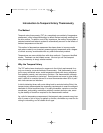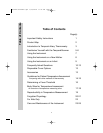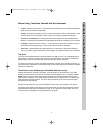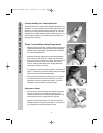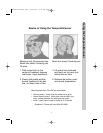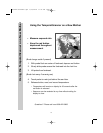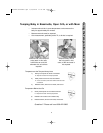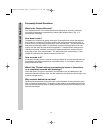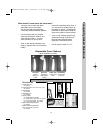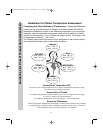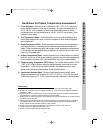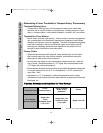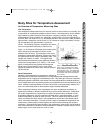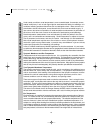
Frequently Asked Questions
Why not use only the area behind the ear lobe?
Since the arterial branch is deeper behind the ear lobe than at the temple, under normal
conditions it is less accurate because of its variability. But under diaphoretic conditions,
the blood flow behind the ear lobe is as high as at the TA, making it as accurate as the TA,
but only during diaphoresis or with head trauma as previously mentioned.
What are the benefits of using temporal artery thermometry?
Besides the inherent accuracy of the method, TAT presents no risk of injury for patient or
clinician, eliminates the need for disrobing or unbundling, and is suitable for all ages.
What is arterial temperature?
Arterial temperature is the same temperature as the blood flowing from the heart via the
pulmonary artery. It is the best determinant of body temperature, and unaffected by the
artifactual errors and time delays present with oral and rectal methods.
How does the TemporalScanner compare to our old method?
Arterial temperature is close to rectal temperature, approximately 0.8ºF (0.4°C) higher than
oral temps. Expect larger differences at times, however, as the dynamics of thermoregula-
tion favor the temporal artery method.
High readings?
Temperatures measured with TemporalScanner may be higher than your current method,
especially if you are used to oral or axillary temps. Oral and axillary temperatures can be
misleadingly lowered due to patient activity such as mouth breathing, drinking, tachypnea,
coughing, talking, etc, and periods of vasoconstriction during the fever process. Any or all
of these conditions may even mask fevers that the TemporalScanner will detect.
Low readings?
A patient’s temperature measured with the TemporalScanner is normally never appreciably
lower than oral temperature. Lower temperatures are usually from scanning too fast, not
keeping the button depressed, a dirty lens, or a sweaty forehead.
What else should I know?
False high readings:
• Measure only skin that is exposed to the environment. Any covering, hair, hat, bandages,
etc, would prevent the heat from dissipating, causing the reading to be falsely high.
11
818528r5:818528r5.qxd 4/24/2008 11:04 AM Page 13



